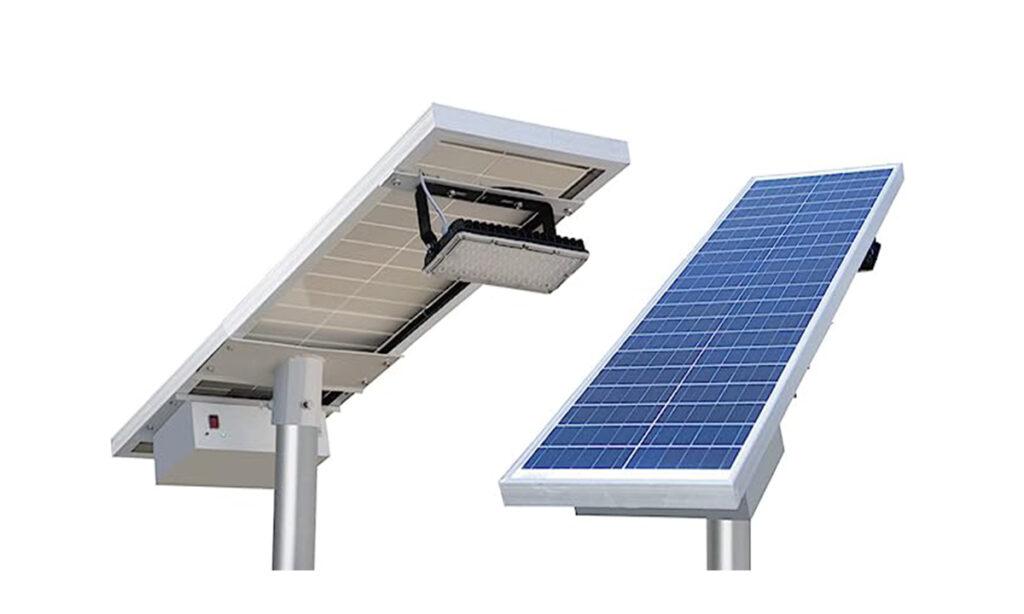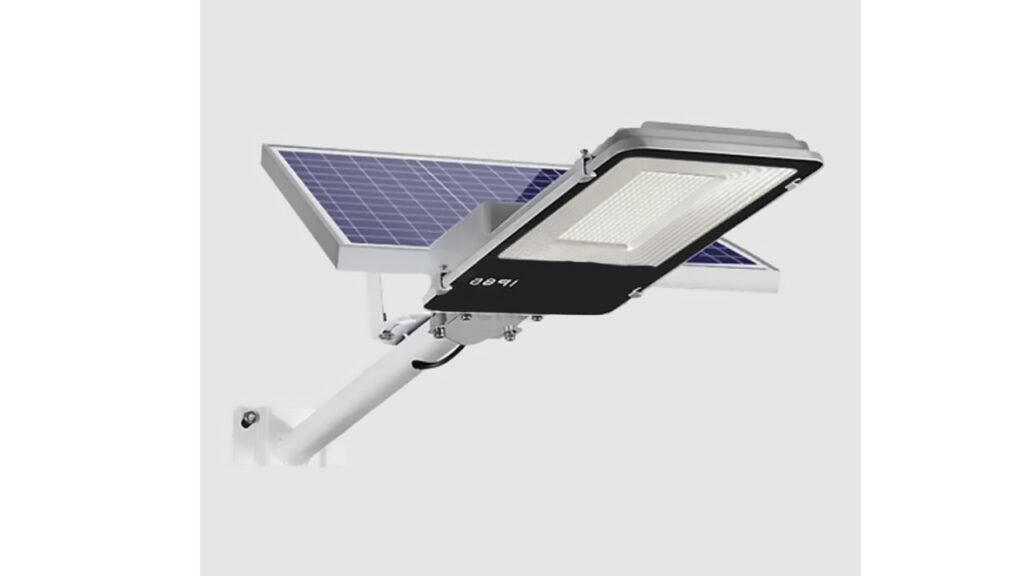Table of Contents
- Table of Contents
- Introduction: Harnessing the Power of the Sun for Street Lighting
- The Advantages of Solar Light for Street
- How Solar Street Lights Work
- Key Components of Solar Street Lights
- Types of Solar Street Lights
- Factors to Consider when Choosing Solar Street Lights
- Installation and Maintenance of Solar Street Lights
- Cost-Effectiveness and Environmental Benefits
- Challenges and Solutions in Solar Street Lighting
- Future Trends in Solar Street Lighting
- Conclusion
- FAQs

1. Solar Light for Street | Introduction
Harnessing the Power of the Sun for Street Lighting
In our quest for sustainable and eco-friendly solutions, solar light for street has emerged as a game-changer in the field of urban lighting. As cities expand and energy consumption rises, the need for efficient and cost-effective street lighting becomes increasingly vital. Solar street lights offer a compelling solution by utilizing the power of the sun to illuminate our streets, reducing dependence on traditional energy sources and promoting environmental stewardship.
2. The Advantages of Solar Light for Street
Solar light for street comes with a myriad of advantages that make it a preferred choice for urban lighting projects. Here are some key benefits:
2.1 Energy Efficiency and Cost Savings
Solar Light for street lights harness solar energy during the day and store it in batteries for use at night. By eliminating the need for grid electricity, these lights help reduce energy consumption and cut down on utility costs. Additionally, the long lifespan of LED bulbs used in solar street lights ensures significant savings in maintenance and replacement expenses.
2.2 Environmentally Friendly Solution
With no greenhouse gas emissions or reliance on fossil fuels, solar street lights provide a clean and sustainable lighting solution. By choosing solar, cities can contribute to the reduction of carbon footprint and promote a greener environment for future generations.
2.3 Independence from Power Grid
Solar street lights operate autonomously, disconnected from the power grid. This independence makes them a reliable lighting option, especially in remote or off-grid areas where traditional electricity infrastructure may be limited. In case of power outages or natural disasters, solar street lights continue to provide illumination, enhancing safety and security.
3. How Solar Street Lights Work
Solar light for Street operate on a simple yet ingenious principle. During the day, photovoltaic (PV) panels mounted on top of the lights absorb sunlight and convert it into electricity. This electrical energy is then stored in batteries, which power the LED lights during the night. The lights are equipped with sensors that detect the ambient light levels, ensuring they automatically turn on at dusk and switch off at dawn.
4. Key Components of Solar Street Lights
Solar street lights consist of several crucial components that work together to provide efficient and reliable illumination. These components include:
4.1 Photovoltaic (PV) Panels
PV panels are responsible for capturing sunlight and converting it into electricity. These panels are typically made of high-quality silicon solar cells, which generate electricity when exposed to sunlight.
4.2 Battery
The battery acts as an energy storage unit, storing the electricity generated by the PV panels during the day. This stored energy powers the LED lights during the night, ensuring continuous illumination.
4.3 LED Lights
Light Emitting Diode (LED) lights are the primary light source in solar street lights. LED technology offers high energy efficiency, longevity, and excellent illumination quality, making it an ideal choice for street lighting.
4.4 Controller
The controller regulates the charging and discharging of the battery, ensuring optimal performance and longevity. It also controls the automatic switching of the lights based on ambient light conditions.
At Lumencity We sell Battery | Solar panels | Controllers so that you can make your own Solar Light Visit Our Store
5. Types of Solar Light For Street
You can Watch The Unboxing of all the solar Street Lights and Garden Lights Click Here
5.1 Standalone Solar Street Lights

Standalone solar street lights are independent units with integrated PV panels, battery, and LED lights. These lights are suitable for areas with no existing electrical infrastructure and offer easy installation and maintenance.
5.2 Solar Street Light with Grid Backup
Solar street lights with grid backup incorporate a grid connection in addition to the solar-powered system. This configuration ensures uninterrupted lighting even during extended periods of inclement weather or low solar radiation.
5.3 Solar Street Light with Motion Sensors

Solar Light for Street equipped with motion sensors detect movement and adjust the light intensity accordingly. This feature helps conserve energy by providing bright illumination only when required, enhancing efficiency and extending battery life.
6. Factors to Consider when Choosing Solar Street Lights
6.1 Solar Irradiance and Geographical Location
The amount of sunlight received in a particular location directly impacts the performance of solar street lights. Areas with higher solar irradiance are more conducive to efficient operation and should be considered during project planning.
6.2 Lighting Requirements and Lumen Output
Understanding the desired lighting levels and lumen output required for the project is crucial. Factors such as road width, pole height, and specific lighting standards need to be taken into account to achieve adequate illumination.
6.3 Battery Capacity and Autonomy
Choosing the right battery capacity ensures sufficient energy storage to power the lights throughout the night, even during prolonged cloudy periods. Battery autonomy, or the number of days the lights can operate without direct sunlight, is also a critical consideration.
6.4 Durability and Weather Resistance
Solar street lights should be designed to withstand harsh weather conditions such as heavy rain, strong winds, and extreme temperatures. Opting for lights with high-quality materials and robust construction ensures durability and long-term performance.
7. Installation and Maintenance of Solar Street Lights
Installing solar Light for Street requires careful planning and execution. Here are the key steps involved:
Site Assessment: Evaluate the location for optimal solar exposure, considering shading, nearby structures, and potential obstructions.
Mounting and Wiring: Install the PV panels securely on poles or rooftops and connect them to the lights and batteries using appropriate wiring.
Battery Placement: Position the batteries in a safe and accessible location, protecting them from theft and vandalism.
Controller Configuration: Set up the controller to regulate charging, discharging, and light operation according to project requirements.
Regular Maintenance: Perform routine inspections, clean the panels, check battery health, and ensure proper functioning of all components. Timely maintenance helps maximize performance and lifespan.
8. Cost-Effectiveness and Environmental Benefits
Solar light for Street offer compelling cost-effectiveness and environmental advantages compared to conventional street lighting systems. Some key benefits include:
Reduced electricity bills and lower operational costs.
Minimal maintenance and replacement expenses.
Carbon footprint reduction through the use of clean energy.
Independence from rising energy prices and grid dependence.
9. Challenges and Solutions in Solar Light For Street
While solar street lighting presents numerous benefits, certain challenges need to be addressed for widespread adoption. Here are some common challenges and potential solutions:
Limited Solar Irradiance: In areas with low sunlight availability, incorporating more efficient PV panels or utilizing hybrid systems with grid backup can overcome this limitation.
Battery Performance and Lifespan: Selecting high-quality batteries with adequate capacity and ensuring proper maintenance can mitigate issues related to battery performance and lifespan.
Vandalism and Theft: Implementing anti-theft measures such as tamper-proof screws, protective enclosures, and community engagement can help deter vandalism and theft.
10. Future Trends in Solar Street Lighting
The field of solar street lighting continues to evolve, with several exciting trends shaping its future. Some notable trends include:
Advancements in Energy Storage: The development of more efficient and cost-effective battery technologies, such as lithium-ion batteries, is expected to enhance energy storage capacity and overall system performance.
Integration of Smart Controls: Integration of smart controls and IoT (Internet of Things) technology enables remote monitoring, dimming, and adaptive lighting, further improving energy efficiency and maintenance practices.
Design Innovation and Aesthetics: Continued innovation in solar street light design, including sleek and visually appealing fixtures, helps integrate solar lighting seamlessly into urban landscapes.
11. Conclusion
Solar light for street offers a sustainable and efficient solution for illuminating our urban spaces. By harnessing the power of the sun, solar street lights provide cost-effective, environmentally friendly, and reliable lighting. With advancements in technology and increasing awareness of renewable energy benefits, solar street lighting is poised to play a significant role in the future of urban lighting.
12. FAQs
Q1. Can solar street lights work in cloudy or rainy conditions?
Yes, solar street lights can still function in cloudy or rainy conditions. However, the amount of energy generated may be reduced, impacting the overall performance and autonomy of the lights.
Q2. What is the lifespan of solar street lights?
The lifespan of solar street lights can vary depending on the quality of components used. Generally, well-maintained solar street lights can last anywhere from 10 to 20 years.
Q3. Can solar street lights be installed in areas without sunlight?
Solar street lights require sunlight to generate electricity. While they may not be suitable for areas with minimal sunlight, hybrid systems with grid backup can provide lighting solutions in such locations.
Q4. Are solar street lights cost-effective compared to traditional street lights?
Yes, solar street lights offer long-term cost savings due to reduced electricity bills and minimal maintenance requirements. Although the initial investment may be higher, the overall cost-effectiveness of solar street lights surpasses traditional lighting systems.
Q5. Can solar street lights be customized for specific lighting requirements?
Yes, solar street lights can be customized based on specific lighting requirements. Factors such as lumen output, pole height, and light distribution can be tailored to meet the needs of different projects.
13. Get Access Now: Illuminate Your Streets with Solar Power
Take the first step towards a sustainable and energy-efficient lighting solution. Get access to high-quality solar street lights that enhance safety, reduce costs, and promote environmental well-being.
